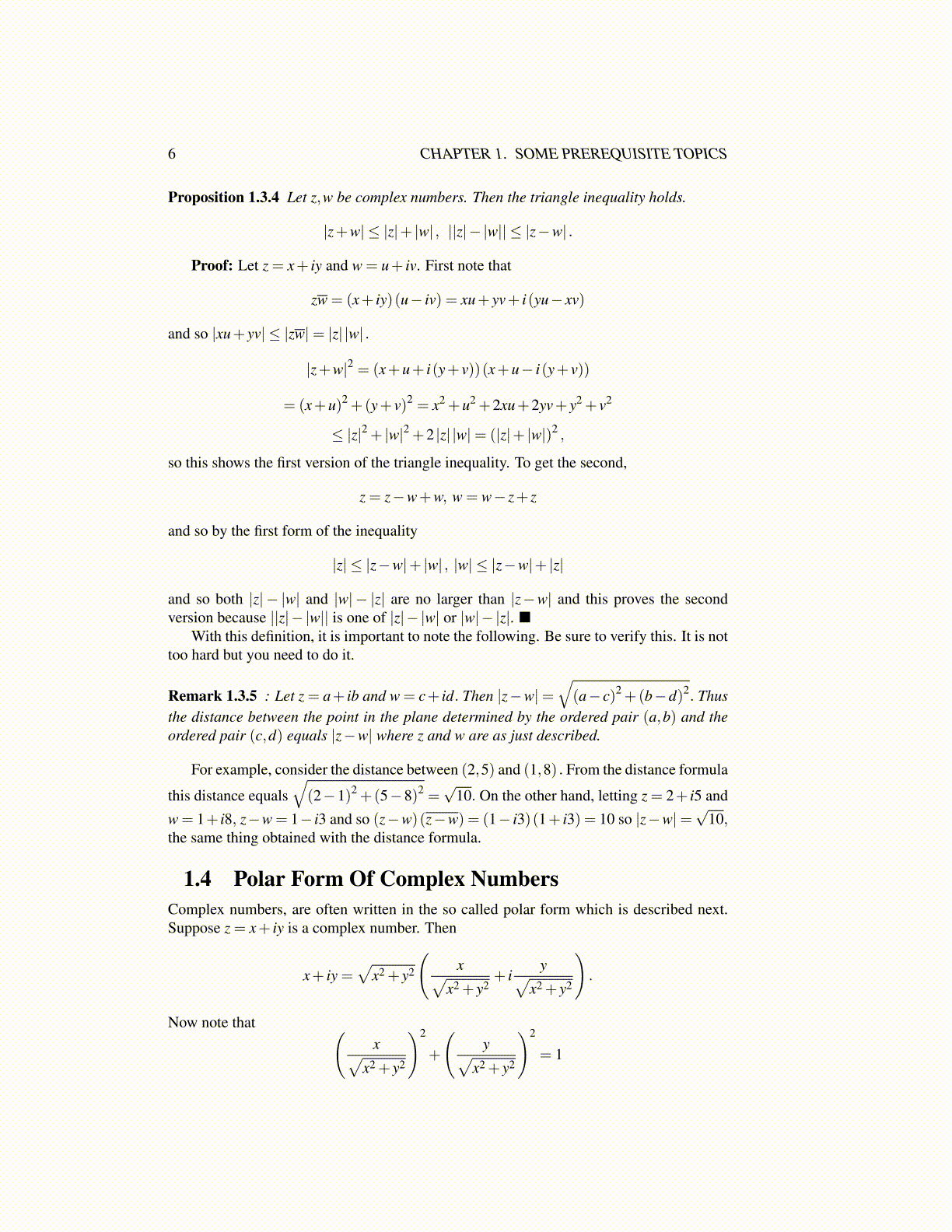
6 CHAPTER 1. SOME PREREQUISITE TOPICS
Proposition 1.3.4 Let z,w be complex numbers. Then the triangle inequality holds.
|z+w| ≤ |z|+ |w| , ||z|− |w|| ≤ |z−w| .
Proof: Let z = x+ iy and w = u+ iv. First note that
zw = (x+ iy)(u− iv) = xu+ yv+ i(yu− xv)
and so |xu+ yv| ≤ |zw|= |z| |w| .
|z+w|2 = (x+u+ i(y+ v))(x+u− i(y+ v))
= (x+u)2 +(y+ v)2 = x2 +u2 +2xu+2yv+ y2 + v2
≤ |z|2 + |w|2 +2 |z| |w|= (|z|+ |w|)2 ,
so this shows the first version of the triangle inequality. To get the second,
z = z−w+w, w = w− z+ z
and so by the first form of the inequality
|z| ≤ |z−w|+ |w| , |w| ≤ |z−w|+ |z|
and so both |z| − |w| and |w| − |z| are no larger than |z−w| and this proves the secondversion because ||z|− |w|| is one of |z|− |w| or |w|− |z|. ■
With this definition, it is important to note the following. Be sure to verify this. It is nottoo hard but you need to do it.
Remark 1.3.5 : Let z = a+ ib and w = c+ id. Then |z−w|=√(a− c)2 +(b−d)2. Thus
the distance between the point in the plane determined by the ordered pair (a,b) and theordered pair (c,d) equals |z−w| where z and w are as just described.
For example, consider the distance between (2,5) and (1,8) . From the distance formula
this distance equals√(2−1)2 +(5−8)2 =
√10. On the other hand, letting z = 2+ i5 and
w = 1+ i8, z−w = 1− i3 and so (z−w)(z−w) = (1− i3)(1+ i3) = 10 so |z−w|=√
10,the same thing obtained with the distance formula.
1.4 Polar Form Of Complex NumbersComplex numbers, are often written in the so called polar form which is described next.Suppose z = x+ iy is a complex number. Then
x+ iy =√
x2 + y2
(x√
x2 + y2+ i
y√x2 + y2
).
Now note that (x√
x2 + y2
)2
+
(y√
x2 + y2
)2
= 1